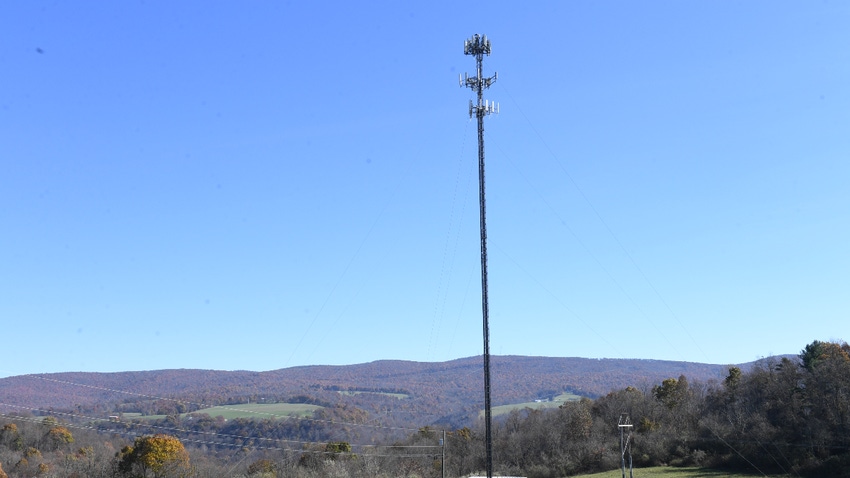It's a hard-knock life for most small US wireless carriers
As T-Mobile, AT&T and Verizon expand their networks, they're putting additional pressure on the small wireless network operators that were previously the only option in such locations.

Mario Gabelli looks like he's fed up with UScellular.
"In light of the extraordinarily poor performance and the lack of focus as a result of TDS' ownership of US Cellular," Gabelli said he plans to attempt a takeover of the company's board at its next shareholder meeting.
Gabelli, a billionaire, owns around 4.5 million shares of TDS, a fiber provider that's also the majority owner of UScellular. With around 5 million mobile customers across 21 US states, UScellular is America's biggest regional wireless network operator. But it's suffering from increasing competition, and the company's shares have lost around 40% of their value over the past year as a result. Indeed, as noted by FierceWireless, UScellular recently engaged in an undisclosed number of layoffs.
"A change in tactics has to be examined and pursued," Gabelli argued.
A UScellular representative declined to comment on Gabelli's letter, issued earlier this month.
To sell or not to sell
UScellular isn't alone. As T-Mobile, AT&T and Verizon all expand their networks into more rural areas, they're putting additional pressure on the small wireless network operators that were previously the only option in such locations.
"We're going to keep going until it doesn't make sense anymore," said Mike Laskowsky, the network manager of United Wireless. The company operates a mobile and fixed wireless network across 120 cell towers in parts of Southwest Kansas. "We're going to stay in mobile as long as we can."
He said AT&T, Verizon and T-Mobile have all moved into United's coverage area in recent years, essentially eliminating the opportunity for the company to provide roaming services to those bigger wireless network operators. As a result, he said United's average revenues per user have been falling, and its total mobile customer base now sits at around 16,000 from a high point of 20,000.
United had planned to maintain its competitive footing with an early move into 5G, but the US government's push against Huawei – United's primary network equipment vendor – scuttled those plans. Now United is working to replace Huawei equipment with gear from Nokia while concurrently upgrading its 4G network to 5G. Laskowsky said United has already launched 5G across roughly two dozen cell sites with a goal of ultimately broadcasting 5G from 50 total cell towers.
"We do everything to make our network the best network," Laskowsky explained. But he said that the company remains open to the idea of getting out of mobile by selling itself to a bigger player, if the right kind of deal comes along.
A number of United's peers have already done so. West Central Wireless in Texas, Missouri's Chariton Valley Communications Corporation (CVCC), Monanta's Triangle Mobile and Bluegrass Cellular in Kentucky are among the smaller wireless network operators in the US that have exited the industry through a sale to a bigger operator.
As for UScellular, rumors have swirled for years that TDS might sell its mobile business. But industry insiders don't believe the Carlson family, which maintains majority control over TDS, will ever be willing to engage in that kind of transaction.
Further, it's unclear whether AT&T, Verizon or T-Mobile has the financial firepower for any major acquisition anyway, particularly after spending billions of dollars on midband spectrum for 5G. For example, Verizon's recent rural acquisitions have centered on spectrum and network assets – actual mobile customers haven't been included in the operator's purchases.
Co-ops, partnerships and subsidies
Amid a tightening competitive environment, encroaching competition from big network operators, 5G upgrade costs and an uncertain economic outlook, small wireless operators are eyeing a handful of strategic responses.
For example, PTCI's Brian Hough said his company plans to upgrade to 5G with Nokia equipment later this year. The operator counts around 8,000 mobile customers in Oklahoma, and is a roaming partner for AT&T. T-Mobile and Verizon have expanded their networks into PTCI's coverage area, but AT&T pays the company roaming fees so its customers can also remain connected there.
However, Hough explained that – unlike United Wireless – PTCI is a cooperative. Meaning, it's a not-for-profit organization that's designed to provide cellular services across its membership area. As a result, PTCI isn't under the same kind of profit-and-loss pressures that some of its other peers face.
The Rural Independent Network Alliance (RINA) represents another strategy available to some smaller wireless network operators. Strata Networks and South Central Communications founded RINA in 2006 to jointly operate a shared switch, thus cutting down their respective expenses. Since then, other operators have joined RINA, and the organization has worked to share costs across a variety of network elements.
Indeed, RINA recently hosted a trade show in Park City, Utah, alongside the Rural Wireless Association (RWA), where Mavenir announced it would supply members with a mobile core that covers everything from 4G to 5G standalone (SA) technology.
"I think RINA is the right way to go," said Javier Martín, the CEO of Summa Networks, a vendor that's working to sell networking services to operators worldwide. Martín attended RINA's recent show in Park City in order to drum up more business for the company among smaller US wireless operators.
Finally, government subsidies represent yet another lever for small wireless carriers to pull. "I'm very positive on it," said Chris Townson of DTC Communications in Tennessee.
Townson said government funds from programs like Broadband Equity Access and Deployment (BEAD), Affordable Connectivity Program (ACP), Universal Service Fund (USF) and the upcoming 5G Fund ought to help small operators offset the costs of providing services in rural areas. He said that such services sometimes can't work financially without a steady, reliable stream of government money.
Indeed, Townson's DTC is currently participating in yet another government funding program: the FCC's rip and replace effort. That program aims to reimburse US network operators for the costs involved in removing "unsecure" equipment – gear from Chinese vendors ZTE and Huawei – from their networks. Getting that program fully funded remains a top action item for companies like United, PTCI and DTC.
Looking to the future
But those are just some of the many complicated issues facing America's smaller wireless network operators.
Some continue to eye an upgrade to 5G. After all, they know that the big providers in the space – AT&T, Verizon and T-Mobile – will eventually want to shift all their roaming traffic onto 5G. Smaller wireless network operators are somewhat at the mercy of the nationwide operators because that's how their customers stay connected when they travel outside of their home operator's coverage area.
But that 5G upgrade process is complicated by a variety of technological topics. For example, should smaller wireless carriers embrace the standalone (SA) version of 5G? Or should they stick with the non-standalone (NSA) version that's been deployed across the globe? It's a tricky decision considering some operators like AT&T and Verizon have been dragging their feet in their shift to the SA version of 5G.
Similarly, should smaller US network operators consider putting their voice traffic onto 5G? The technology underpinning such a service – Voice over New Radio, or 5G VoNR – has proven to be a complex topic for operators like Dish Network.
Finally, there's one more challenge that may await small wireless network operators that decide to stay in the industry and upgrade to 5G: satellites.
A wide range of companies – from Apple to Qualcomm to Inmarsat to Lynk Global to AST SpaceMobile – are developing technologies that would connect regular cell phones directly to satellites. Although the technology is relatively new and not widely available, there's a chance that it could become relatively commonplace across a wide range of phones in the not-too-distant future.
If that happens, will big wireless network operators decide to discontinue roaming onto the networks of rural operators altogether? Doing so could eliminate a key source of those operators' revenues.
"I don't think it [cellular coverage from space] is ever going to be a complete replacement for terrestrial wireless, so I do think we have to continue to make sure we have a robust, thriving terrestrial wireless as we see this new technology develop," argued FCC Commissioner Brendan Carr at the recent show in Park City.
Nonetheless, companies ranging from SpaceX to Viasat have hinted at their interest in scoring revenues from such services. Those revenues could come out of the pocket of companies like UScellular, United Wireless and PTCI.
Related posts:
— Mike Dano, Editorial Director, 5G & Mobile Strategies, Light Reading | @mikeddano
About the Author(s)
You May Also Like












